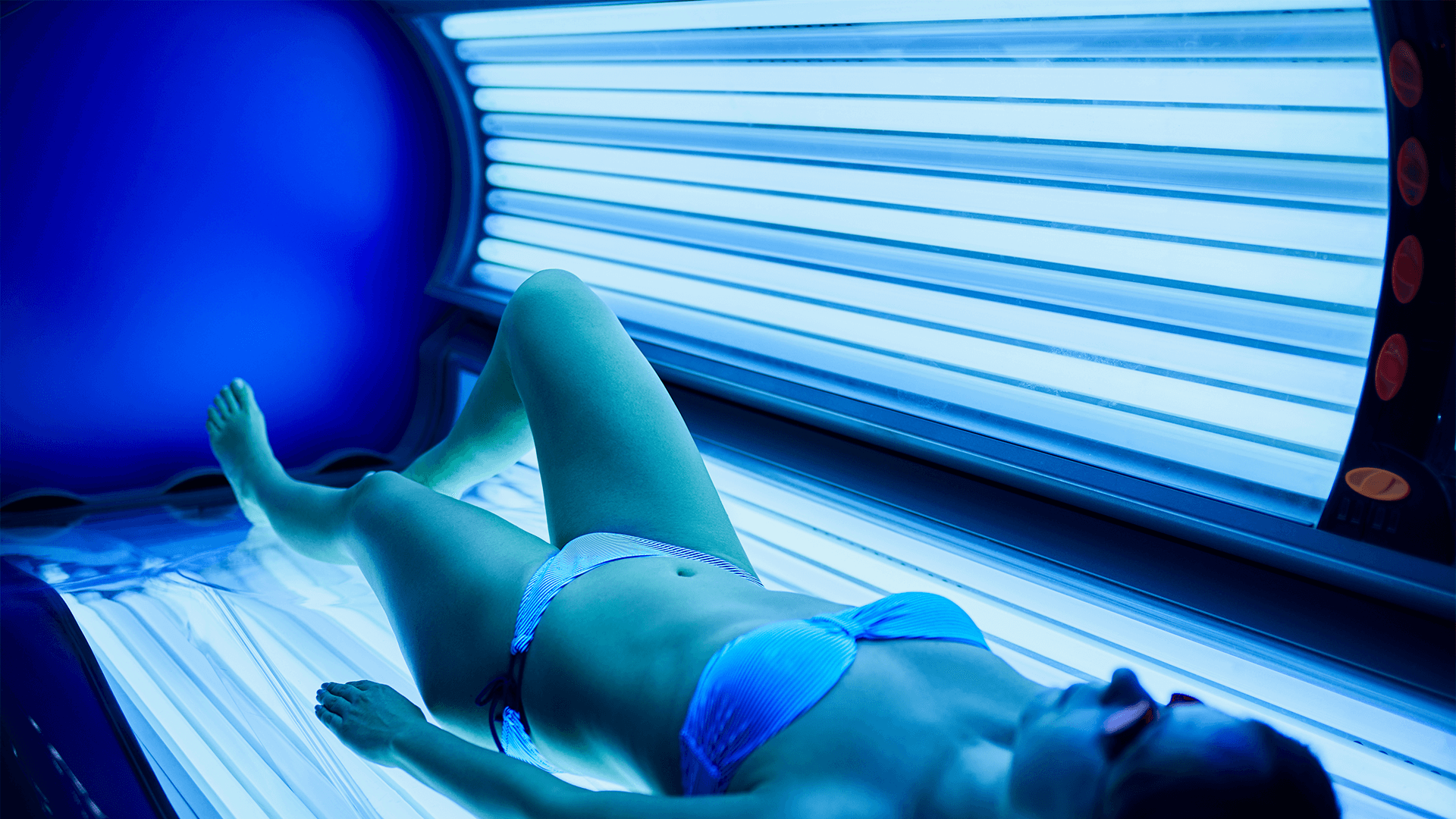Nothing beats waking up to bronzed, glowing skin. Let’s face it, life is simply better when you have a tan, but how you achieve that tan is really important. You know what we’re going to say, don’t you? You’ll not like it, but it needs to be said. Here it goes…
Indoor tanning is bad for you!
There is no such thing as a ‘safe’ tan that requires UV radiation to activate. It does not exist, and you need to bail on that mentality pronto or risk further damage to your skin and health. Don’t just take our word for it, look at the facts; each year in the United States, more than 419,000 cases of skin cancer are linked to indoor tanning.
Let’s start with some good news! You don’t need tanning beds in order to achieve that gorgeous Kim K glow. Self-tanning products, such as mousse, water, and self-tan drops, are all safe and effective ways to give you the deep tan that you love so much. Hey, we love it too.
Let’s look at the dangers of indoor tanning here.
Cancer
As mentioned above, the use of tanning beds greatly increases your chances of getting skin cancer, which can be fatal in many cases. To mimic the sun, tanning booths and sunbeds give off UV (ultraviolet) rays, damaging the DNA in your skin cells. Over time, with relentless use of tanning beds, this damage can build up and cause skin cancer.
While this is typically common knowledge (or at least, it should be), what many people fail to realize is that the UV rays used in sunbeds can be up to six times more intense than direct sunlight. This means that every minute on the tanning bed equals 12 minutes in the sun!
Damages immune system
Recent times (don’t worry, we’re not going to say the dreaded word) have demonstrated just how important it is to have an immune system in tip-top condition. It’s been proven that constant exposure to UV radiation can suppress the proper functioning of your immune system, meaning it’ll be harder for your body to fight off future infections.
We’re not here to scare or upset you. We just want you to understand that the risks associated with tanning beds simply aren’t worth the tan, especially when there are other ways to achieve that sun-kissed vibe.
You could get addicted
In some cases, tanning beds can be just as addictive as taking drugs and drinking alcohol. The more you expose yourself to UV radiation, the more your body will crave it, which can negatively impact your mental and physical health. You should stop visiting tanning booths long before your body begins to long for it.
Premature aging
Premature aging is a cosmetic problem… but a problem, nonetheless. For many Americans, the goal is to stay looking young for as long as possible, with 42 per cent of women aged between 25 and 34 years old admitting they ‘regularly’ worry about signs of aging.
If you’re in this crew, you’re going to want to ditch the sunbeds once and for all. The ultraviolet rays are responsible for causing wrinkles in addition to coarse, leathery skin. You may think you’re exempt, but the effects can suddenly appear years down the line. If you want to look like you regularly bathe in the Fountain of Youth, tanning beds should never be an option.
Injury to eyes
Keep your eyes on the prize, and that prize is healthy eyes. Continuous exposure to the harmful effects of UV radiation can play havoc with your eyes, particularly for those who don’t wear the appropriate goggles during their sessions (you know who you are!).
Irritation and macular degeneration are two very real problems that can result from using tanning beds, as well as cataracts. Even if you do wear the right kind of protective eyewear, it’s just not worth the risk. Sorry, but that’s the tea.
Tanning myths
As with anything, tanning has accumulated some wild ‘facts’ over the years, most of which simply aren’t true. Believing these myths may encourage you to continue using sunbeds, which is why we’re about to blow two of the biggest culprits out of the water. You’re welcome.
Tanning is necessary for vitamin D – There are other ways to get the necessary levels of vitamin D that your body needs, such as eating fatty fish and seafood or taking supplements. This is not a justification for damaging your skin!
Only fair-skinned people need to worry about sun damage – Not true! Those with darker skin must still take every precaution possible when it comes to the sun and indoor tanning. Although the extra melanin in darker skin can offer more protection, it’s not enough to filter all the harmful UV radiation.
Start protecting yourself and your skin
As we’ve discussed, the dangers associated with tanning beds just aren’t worth the tan – not when there are safer, gentler ways to achieve that sought-after glow. Taking risks is fun and exciting for the most part, but not when it comes to skin cancer and premature wrinkles!
If you truly care about keeping up your appearance, it’s crucial you look past the initial superficial benefits of indoor tanning and really understand the scary, ugly side that comes with it. Safe self-tanning is the way forward, and we’re sure you’ll thank us for this guidance (okay, we’ll admit it, the pushing). Happy self-tanning!

















